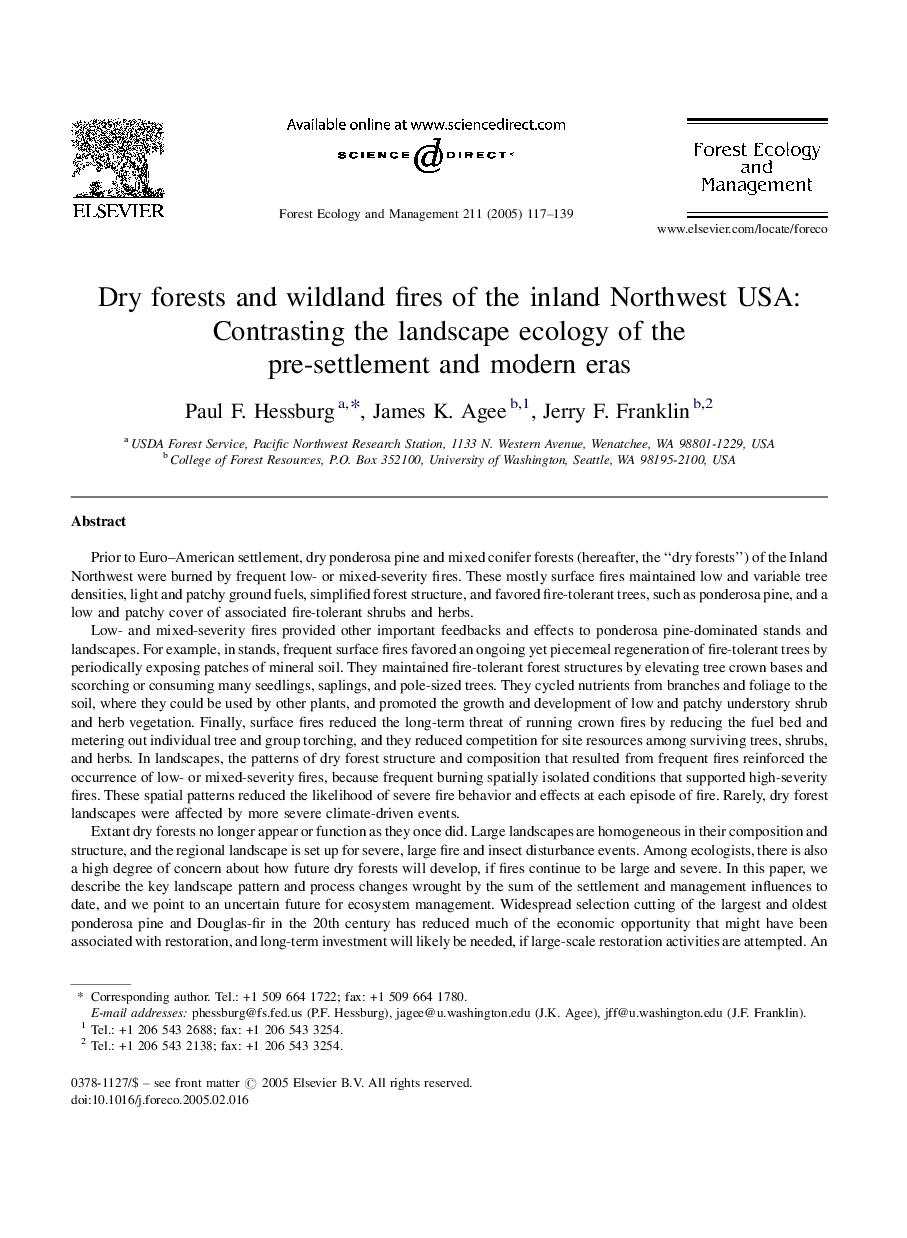| Article ID | Journal | Published Year | Pages | File Type |
|---|---|---|---|---|
| 9620342 | Forest Ecology and Management | 2005 | 23 Pages |
Abstract
Extant dry forests no longer appear or function as they once did. Large landscapes are homogeneous in their composition and structure, and the regional landscape is set up for severe, large fire and insect disturbance events. Among ecologists, there is also a high degree of concern about how future dry forests will develop, if fires continue to be large and severe. In this paper, we describe the key landscape pattern and process changes wrought by the sum of the settlement and management influences to date, and we point to an uncertain future for ecosystem management. Widespread selection cutting of the largest and oldest ponderosa pine and Douglas-fir in the 20th century has reduced much of the economic opportunity that might have been associated with restoration, and long-term investment will likely be needed, if large-scale restoration activities are attempted. An uncertain future for ecosystem management is based on the lack of current and improbable future social consensus concerning desired outcomes for public forestlands, the need for significant financial investment in ecosystem restoration, a lack of integrated planning and decision tools, and mismatches between the existing planning process, Congressional appropriations, and complex management and restoration problems.
Keywords
Related Topics
Life Sciences
Agricultural and Biological Sciences
Ecology, Evolution, Behavior and Systematics
Authors
Paul F. Hessburg, James K. Agee, Jerry F. Franklin,
